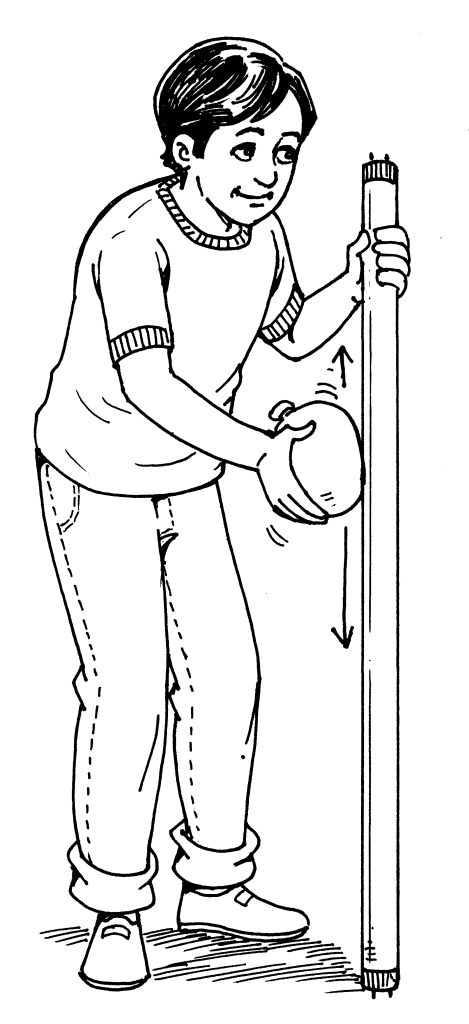
We all have tube lights everywhere around us, in our homes, schools, etc. But have you ever wondered how a fluorescent tube (light bulb) works.
Things Required:
Balloon
Fluorescent tube
Directions:
Inflate and tie the balloon. Wash the outside of the fluorescent tube and thoroughly dry. In a dark room, place one end of the tube against the floor. Hold the tube upright and quickly rub the balloon up and down the outside of it. Hold the balloon near the tube.
This Is What Happens:
The fluorescent tube starts to glow and the light moves with the movement of the balloon. Once the tube starts glowing, even the nearness of the balloon causes light to be produced.
Science Behind It:
When a fluorescent tube is connected to an electrical current, the chemicals on the tiny filaments at each end of the tube produce electricity that can jump from one end of the tube to the other, producing 120 flashes of light every second. This light produces ultraviolet light-rays invisible to the human eye. A drop of mercury inside the tube is vapourized by the electrical flashes and the vapour carries electrons to the phosphor powder coating the inside of the tube. This coating changes the ultraviolet energy into light energy that can be seen. Rubbing the balloon on the tube causes the same changes to occur, but on a smaller scale. Rubbing the balloon causes electrons to build up on the surface of the balloon. This build-up of electrons causes the mercury vapour inside the tube to become charged, and just as when the tube is connected to an electric current, the charged mercury vapour bombards the fluorescent chemicals, resulting in visible light.
